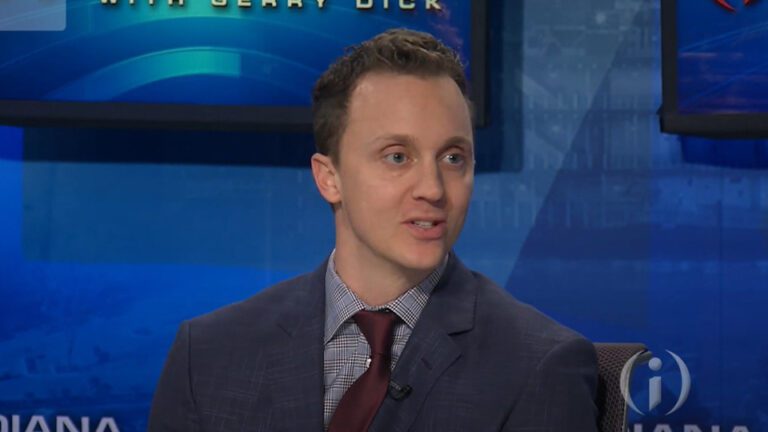
The president and CEO of Indianapolis-based Energy Systems Network says he was excited but not surprised to hear that the Midwest Alliance for Clean Hydrogen, or MachH2, was one of seven groups selected to build clean hydrogen hubs in the U.S.
The Biden administration made the announcement Friday, and MachH2, which includes Indiana, Illinois and Michigan, is set to receive up to $1 billion in grant funding from the U.S. Department of Energy.
“I think we knew throughout this process that the Midwest was a really critical location for the future of this hydrogen economy because of the concentration of heavy industry and manufacturing, transportation and logistics,” said Paul Mitchell.
In an interview with Inside INdiana Business, Mitchell called the selection of the Midwest group “validation.”
“In general, there are some unique assets, whether it's the Whiting BP refinery or some of the nuclear facilities in Illinois that are relatively close together,” he said. “And so once we saw the opportunity coming from the DOE, I think people in Indiana and our neighboring states always knew along the way that we had a very good, strong opportunity here.”
MachH2 is comprised of more than 70 public and private organizations, including ESN in Indiana.
On the Indiana side, production of the so-called blue hydrogen would take place at or near BP's Whiting refinery, and Mitchell said having such a facility ready to go was a critical piece of the district's pitch.
“These hubs are really about creating a high-volume, clean hydrogen network. It is not about building some demo or pilot projects. It is about trying to achieve commercial scale hydrogen production that can lower the price of pure hydrogen. To do that, you need scale, and to achieve scale, you need really big production assets.”
Blue hydrogen is produced by converting natural gas into carbon dioxide and hydrogen, with the CO2 stored underground. Low-carbon hydrogen fuel can be used in a variety of sectors, including steelmaking, power generation and agriculture.
Mitchell said the federal funding will leverage additional investments to further implement the hydrogen strategy.
“While it's a billion dollars from the federal government, that unlocks many times the commercial investment that's necessary to achieve the scale we would need to have hydrogen as a strong, clean fuel for the country,” he said. .
The White House estimated that the seven hubs together would spur more than $40 billion in private investment. In a March interview on Inside INdiana Business with Gerry Dick, Mitchell said clean hydrogen could create a $10 billion opportunity for Indiana over the next decade.
Mitchell applauded Gov. Eric Holcomb, the Indiana Economic Development Corp. and state legislators to get things done in Indiana, particularly with the signing of House Enrolled Act 1209, which created a regulatory framework for companies to store sequestered carbon dioxide underground in Indiana.
“Also, in helping to explain to policymakers, local government officials, university leaders why carbon capture and clean hydrogen is important, the state has done a great job of that,” he said. “Without these new tools, without these new investments, it's going to become increasingly difficult for our heavy industry and our manufacturing base, which is the lifeblood of Indiana's economy, to thrive.”
Now that the announcement has been made, Mitchell said MachH2 representatives will begin working with the Department of Energy to finalize the grant agreement, which could take “some time.”
But the group wants to start discussions with residents in the communities where many of the investments will be made.
“It's been difficult to give clarity to the communities in northwest Indiana or other parts of the Midwest that will be impacted by these strategic investments, we believe, in a great, positive way from an economic development standpoint [and] in terms of environmental sustainability. But we have to start talking to people, community leaders, business leaders, elected officials, to help them understand why these investments are important, not just for their communities, but for the state, the region and the country.”
You can learn more about the other regions selected for hydrogen hubs by the DOE at by clicking here.
The story continues below

